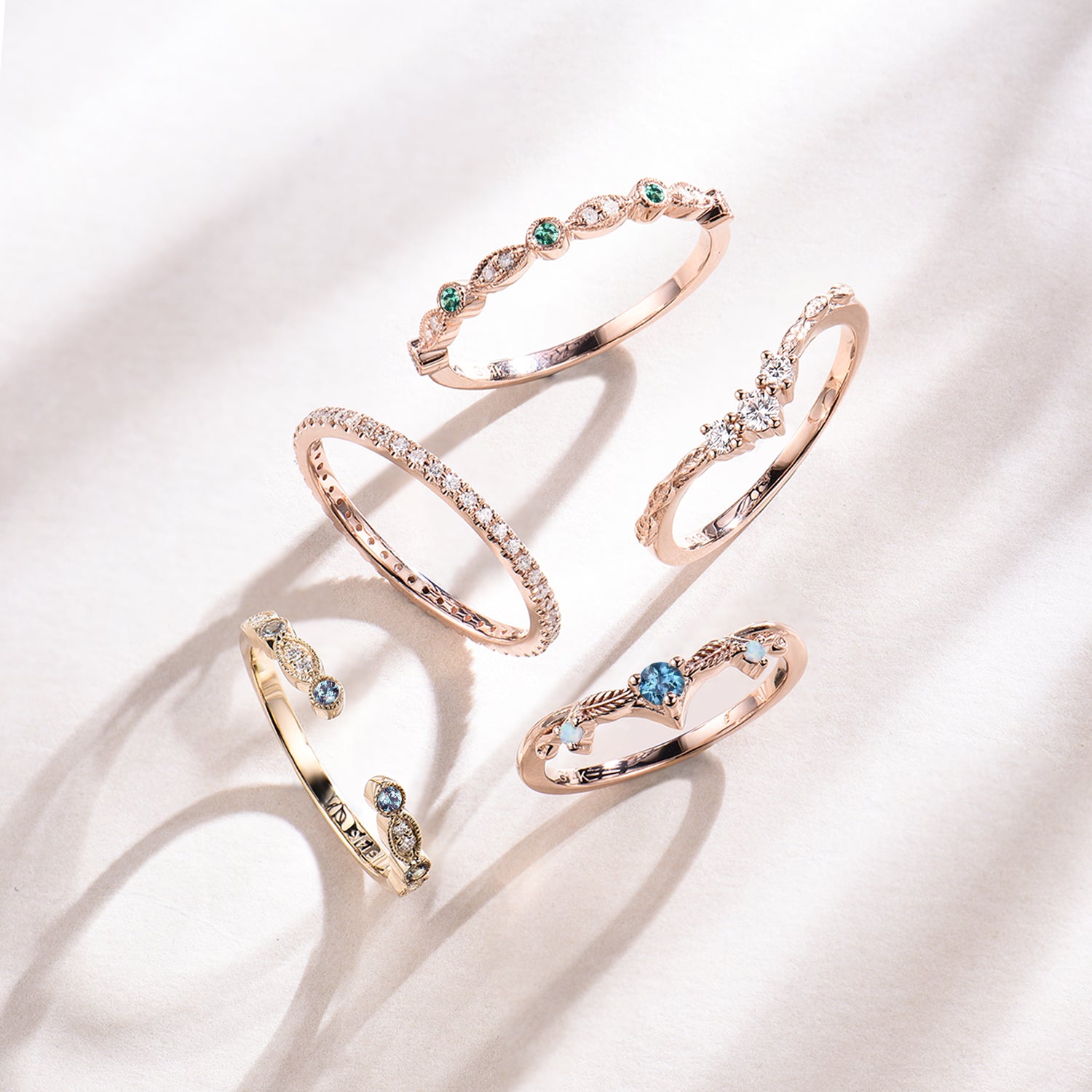Understanding Alexandrite: How Its Color Transformation Property Affects Price
If you're on the lookout for a gemstone that's truly out of the ordinary, then you should turn to Alexandrite and for good reasons. This gem isn't just another stone in a jeweler's collection; it's a heart-stealer. Why? Because Alexandrite’s color changing capacity fascinates. Imagine a ring that's green in the daylight and transforms to a cozy red by candlelight. It's like owning two gems in one! In this blog, we're going to look at all there is to know about Alexandrite, a gem that doesn’t just sparkle but also tells a story with its colors.
The Origin of Alexandrite
The discovery of Alexandrite is as interesting as its magical appearance under light. It was first discovered in the emerald-rich Ural Mountains of Russia in 1830 and was found on the same day as the birthday of Russia’s then-heir apparent, Alexander II. The extraordinary gem was named in his honor.
Although subsequent deposits have been identified in countries such as Sri Lanka, Madagascar, Tanzania, Zimbabwe, and Brazil, the scarcity of true Alexandrite remains undisputed. It is this scarcity that amplifies its attraction, which makes each piece a treasure for collectors and gemstone lovers alike.
But what exactly contributes to the rarity of Alexandrite? To answer that question, we will take a look at the fine balance of geological conditions required for its formation, its limited availability, and the profound color play that has captivated the world since its imperial beginnings.
The Unusual Color Changing Phenomenon
Among the multitude of precious stones that exist in the world, Alexandrite stands out, distinguished not only by its name and sudden discovery but also by its extraordinary optical characteristic that sets it apart from its peers: the ability to dramatically change color. This gemstone often likened to a chameleon for its shifting shades, is a gem collector's dream.
By daylight or under the fluorescent gleam, Alexandrite boasts a verdant green hue, reminiscent of emerald. Yet, as the sun sets on it, it undergoes a remarkable transformation, adopting the rich, brownish-purple red tones of ruby. This striking metamorphosis has been aptly described as "emerald by day, ruby by night," a testament to its unparalleled versatility and charm.
The phenomenon responsible for this stunning effect is known as the 'Alexandrite effect.' It's not merely a visual trick but a result of the gemstone's complex chemical composition and the way it absorbs and reflects light. Such a distinct and dramatic shift in color is rare in the mineral world, making Alexandrite one of few gems that can do this and a celebrated jewel..
What Causes the Color Changing Effect?
Alexandrite owes its remarkable color shift to the presence of chromium within its crystalline structure. In white light, Alexandrite exhibits a sophisticated purple-grey tone. The stone’s striking blue-green appearance in daylight is a result of its unique ability to reflect unabsorbed green and blue wavelengths. Conversely, under the warm glow of incandescent or candlelight, the gemstone reveals a luscious purple-red sheen. This transformation is attributed to the chromium ions, which allow the red light to pass through, enhancing the red tones and giving Alexandrite its evening color.
Does This Affect Alexandrite Price?
Absolutely. Like all precious stones, Alexandrite is assessed based on the four Cs: cut, clarity, color, and carat. These criteria are important in determining a gemstone's quality and, consequently, its price. While each aspect is significant when evaluating Alexandrite, this article concentrates on the aspect of 'color.' The value of the finest natural Alexandrite is largely gauged by the vibrancy and depth of its color transition. The more pronounced and vivid the shift from one hue to another, the more valuable the gemstone is.
Why Should I Choose Alexandrite?
Choosing Alexandrite for engagement ring is down to personal preference and tastes. However, Alexandrite’s attractive qualities go beyond its color-changing phenomenon, which has garnered immense popularity nevertheless. This gemstone is not only an exquisite choice for a distinctive engagement ring, where its rarity adds to its charm, but it is also revered for its purported metaphysical properties.
It is believed to be a potent talisman in some cultures of the world and natural Alexandrite is said to promote health and facilitate emotional well-being. It is associated with benefits such as enhancing blood circulation and aiding in the detoxification process, thus purifying the body of unwanted substances. Additionally, it is thought to bolster self-esteem and improve decision-making abilities, symbolizing love and prosperity.
The unique combination of its aesthetic appeal, scarcity, and metaphysical benefits makes Alexandrite a gem of true enchantment that stands out among other gemstones.
















